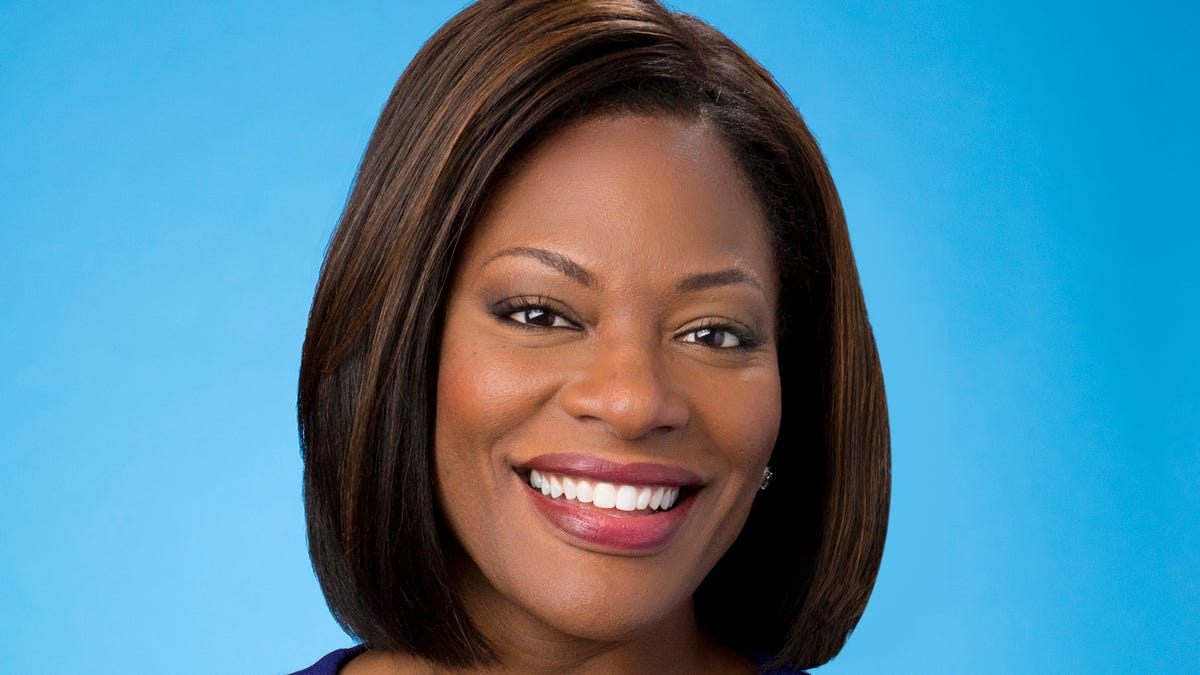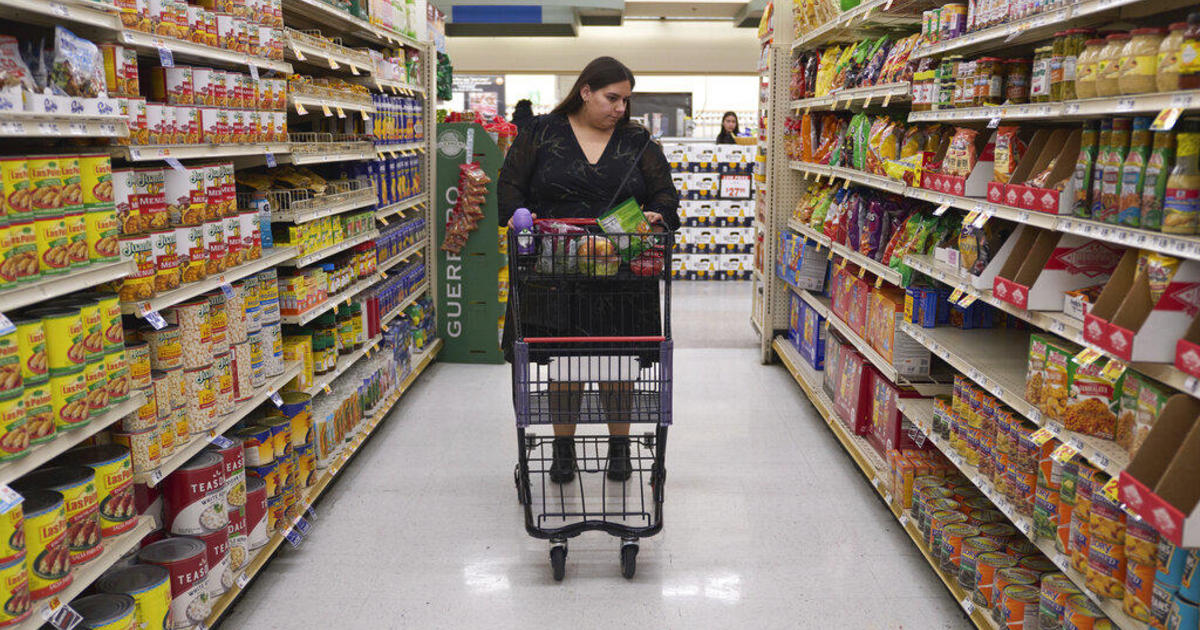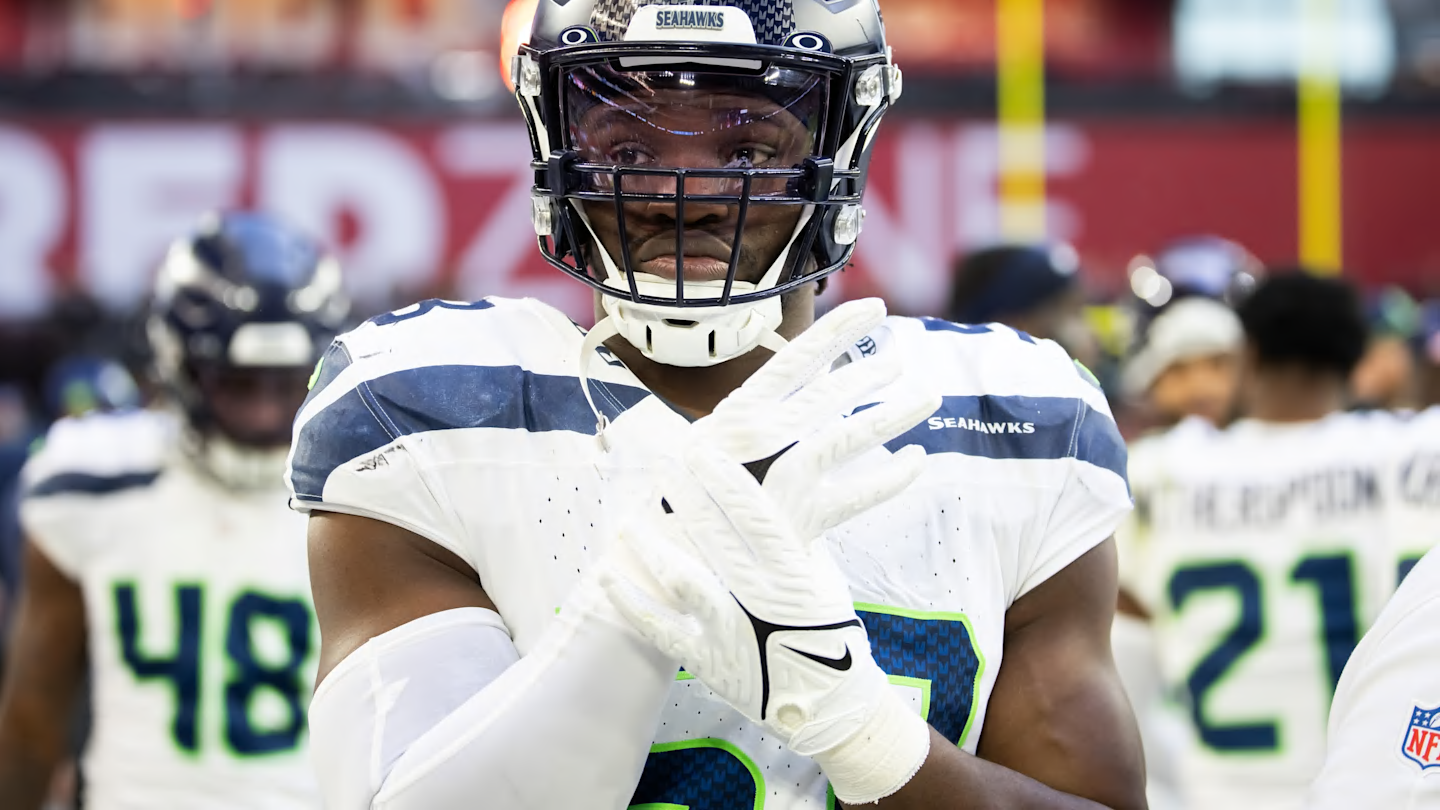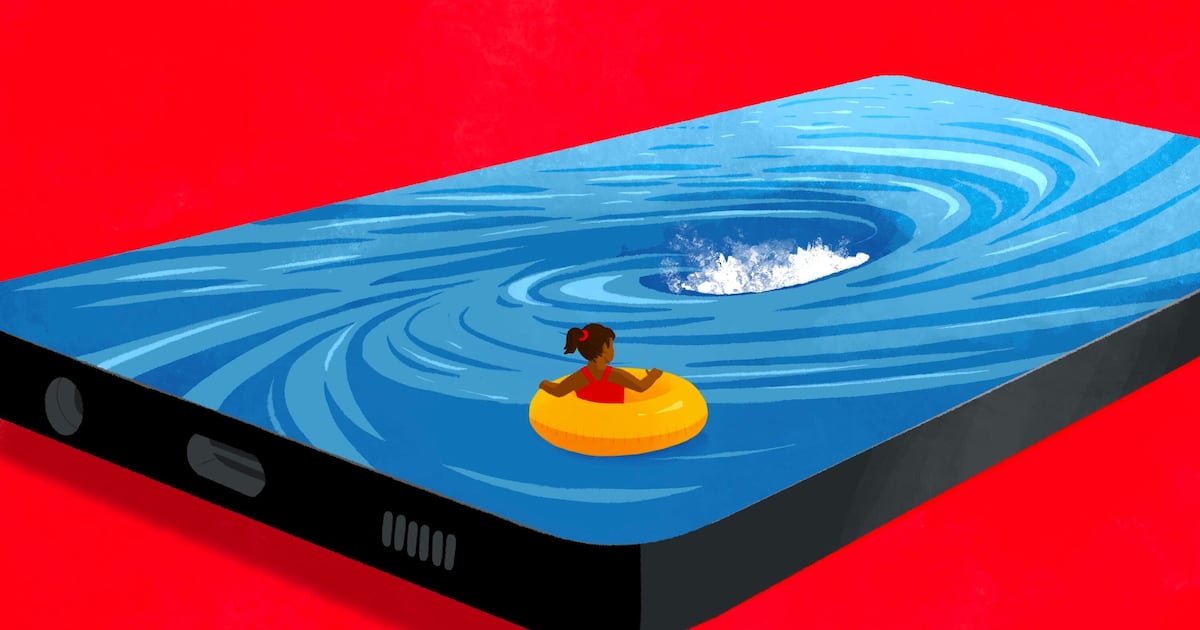Utah
Is JD Vance’s working-class conservatism the future of the GOP? Utah's youngest lawmaker hopes the answer is 'yes'
Utah’s youngest state lawmaker brought his working-class roots to Washington, D.C., this month as part of a movement trying to change the course of the Republican Party.
Rep. Tyler Clancy, R-Provo, age 27, spoke on July 9 at the fourth “National Conservatism” convention, comprised of political leaders, professors and policy wonks hoping to steer the GOP away from corporate influence and toward a blue-collar populism to advance an “America First” agenda.
“As elected officials, we have more accountability to the people of America rather than companies that try to run this country,” Clancy said during his speech. Republicans are tasked with being a “check on the centralization of power by a few,” Clancy said, whether that be in the federal government or the marketplace.
Concluding the three-day-long event was an address from Ohio Sen. JD Vance, featuring a more culturally aggressive, less economically laissez-faire approach to GOP governance. Less than a week later, Vance was chosen by former President Donald Trump as his vice presidential pick in the 2024 general election and declared, by some, as the new face of the Republican Party.
While Clancy considers himself a limited-government conservative, the up-and-coming state lawmaker believes Vance is representative of an emerging crop of Republican leaders who view policy areas like more family benefits, bringing manufacturing jobs back to the U.S. and regulating “big pharma” as just as essential to conserving the American Dream as pushing for lower taxes on businesses.
“I definitely think you’ll see a shift with the younger generation,” Clancy said in an interview with the Deseret News. “We want to stand up for the working class, we want to make sure that people who are in this country and work hard and play by the rules can feed their families, make sure one medical emergency doesn’t put them into bankruptcy and make sure that we’re balancing all interests, not putting some over others, i.e., Wall Street and massive multi-national corporations.”
An evolving Republican Party
Nearly one hundred years ago, the Republican Party redefined itself in opposition to the New Deal’s tax-and-spend welfare state.
As the de facto party of smaller government, the GOP developed a “strong pro-business constituency” who benefited from lower taxes, fewer regulations and limited government intervention in the economy, said Damon Cann, chair of the political science department at Utah State University and former mayor of North Logan from 2018-2021.
But, according to Cann, Trump’s 2016 ascendancy, propelled by shift in support from white-collar to working class voters, is not without precedent in the Grand Old Party.
“There have been elements of these attitudes and beliefs lying just below the surface in the Republican Party, and I think it’s more that Trump capitalized on them than he created them,” Cann said.
The Great Recession of 2008, the collapsing trust in institutions and the influence of globalization set the stage for a GOP base that was more willing to reject elite economic opinion and international trade agreements in favor of preserving entitlement programs and subsidizing American industries, Cann said.
An example of this change in tone can be seen in Mitt Romney’s prescription in 2008 to encourage the market’s creative destruction by “letting Detroit go bankrupt”, compared to what Cann said was Trump’s message: “I’m going to fight for the lower and middle class workers who are falling as victims of globalization, whose jobs are being outsourced from United States.”
Trump’s new running-mate Vance has stated his support for the former president’s proposed agenda of “broad-based tariffs, especially on goods coming in from China” to “protect American industries from all of the competition.” Vance has introduced new railway safety regulations and has praised the Biden-appointed Federal Trade Commission Chair Lina Khan, known for her aggressive antitrust stance against large tech companies, as “doing a pretty good job.”
Maybe the biggest indicator yet of the GOP’s increasing openness to populist economic policies was the invitation for Sean O’Brien, the president of Teamsters, one of the nation’s largest private sector unions, to speak at the Republican National Convention last week.
Clancy, who has the endorsement of the Teamsters’ local chapter and the operating engineers union in Utah, said he was excited to see organized labor “start to play a role again in Republican politics.”
“Unions are a puzzle piece of our economy and help workers bargain for better wages, better worker safety, health insurance, pensions, etc.,” Clancy said.
Can the GOP be pro-business and pro-worker?
The GOP is unlikely to lose its business constituency even if Republicans continue to flirt with pro-union figures, or feature proposals to increase regulations on “big tech” or revoke China’s favored trading status, because “where else will they go?” Cann said.
“At least at present, the Democratic Party isn’t offering an attractive alternative to Republicans,” Cann said.
But it’s not the change in rhetoric that worries Derek Miller, the president and CEO of Salt Lake Chamber. It’s the prospect of a Republican Party that ceases to prioritize the principles that promote job growth and prevent economic stagnation — the principles, Miller said, that have allowed Utah to build “the most robust and prosperous economy” in the nation by “unleashing the power of free enterprise.”
“We talk about economy, we talk about business, but at the end of the day what we’re really talking about is people,” said Miller, who previously served as chief of staff to former Gov. Gary Herbert. “It’s people who start businesses. It’s people who run businesses. It’s people who make businesses successful. So to that the extent the Republican Party wants to be more focused on people I think that’s a welcome thing.”
As a former staffer in Washington, D.C., and then as the director of Utah’s Department of Commerce and the Governor’s Office of Economic Development, Miller said he has seen how tried and true Republican instincts to get government out of business lead to positive impacts for Americans.
Miller said regulations are critical to “protecting the public” and “creating a level playing field for businesses.” But, he added, “I can’t think of a single thing that would jumpstart our national economy more” than getting rid of excessive regulation.
For Clancy, the shift he most wants to see within his party isn’t necessarily toward, or away from, specific free market policies. It’s a shift toward addressing the needs of working families who haven’t traditionally had much access to political representation and bringing “hope to this part of America that’s been left behind.”
“As public servants, we shouldn’t limit ourselves to a religious-type orthodoxy of political leaders in the past,” Clancy said. “It’s more of a call for leaders to really dig in, learn the needs of our community and apply those conservative principles to 21st century problems.”

Utah
Changing of the guards: Here’s a look at preliminary election results in southern, northern Utah

SALT LAKE CITY — Preliminary results from the 2025 general municipal election on Tuesday signal potential leadership changes at the mayoral level in communities throughout southern and northern Utah.
Several incumbent mayors — in St. George and Hurricane in the south and Hyrum and Smithfield in the north — look poised to lose their positions to new challengers.
And a handful of cities are likely watching their mayoral elections closely, awaiting the replacement of longtime leaders who aren’t seeking reelection.
Here’s a rundown of some of the notable preliminary results from races in southern and northern Utah, respectively.
Iron County
With Cedar City’s incumbent Mayor Garth Green not seeking reelection, voters appear ready to elect Steve Nelson as the next leader of Cedar City, as he holds a strong lead on Phil E. Schmidt. Preliminary results show Nelson outpacing Schmidt with 60.26% of the votes compared to Schmidt’s 39.74%.
Enoch’s incumbent Mayor Geoffrey Chestnut isn’t seeking reelection this year. Preliminary results point to a tight race between current leader Jim Rushton (50.36%) and Katherine A. Ross (49.64%), with Rushton leading by less than 1%.
Mollie Halterman will serve another term as Parowan mayor, as she ran unopposed this year. Incumbent Rochell Topham (28.12%) and newcomer Lyle Barton (31.96%) are leading the votes for two seats on the City Council.
Washington County
Hurricane’s incumbent Mayor Nanette Billings (32.34%) is trailing Clark Fawcett (67.66%) in Hurricane’s mayoral race. Fawcett worked as the city manager for over 37 years and is a current city council member.
St. George’s incumbent Mayor Michelle Randall, who was elected in 2021, is seeking reelection for a second term and trying to defend her position from newcomer Jimmie B. Hughes. Preliminary results show a change in leadership could be coming, with Hughes (54.85%) holding a lead over Randall (45.15%).
For the first time in nearly two decades, Santa Clara voters will be selecting a new mayor, with incumbent Rick Rosenburg not seeking reelection. Jarett Waite (54.93%) is currently holding a lead over Ben Shakespeare (45.07%). Incumbent Christa Hinton (43.80%) and newcomer Mark W. Hendrickson (35.31%) are in the lead to secure two spots on Santa Clara’s City Council, with Jimi Kestin (20.89%) trailing.
Cache County
In Hyrum, newcomer Steve J. Miller leads incumbent Mayor Stephanie Miller with 66.58%% of the votes to her 33.42%.
Incumbent Logan Mayor Holly Daines is not seeking reelection, having served as Logan’s mayor since 2017. Mark A. Anderson (61.32%) currently leads Alanna Nafziger (38.68%). Anderson has been a City Council member since 2018.
Richmond Mayor Paul Erickson is not seeking reelection this year. Instead, the race is between Amber Ervin (47.03%) and Jeff Young (52.97%) to be the city’s next mayor.
Smithfield’s incumbent Mayor Kris Monson (48.91%) is trailing challenger Aaron Rudie (51.09%).
With Wellsville’s longtime incumbent Mayor Thomas Bailey not seeking reelection, Carl P. Leatham (43.90%) trails Chad Bankhead Lindley (56.10%) in Wellsville’s mayoral race.
Box Elder County
Garland’s incumbent Mayor Linda Bourne (40.70%) is trailing Daniel Nolan Austin (59.30%).
In Tremonton, City Councilman Bret G. Rohde (71.20%) leads incumbent Mayor Lyle Holmgren with 71.20% of the votes to Holmgren’s 28.80% in the mayoral race.
A full list of preliminary results for Utah can be found on the state’s elections website.
Utah
Here are the new and returning elected leaders in Utah County

OREM — The first wave of results from the 2025 general municipal election is signaling several political shake-ups, as many cities will have new mayors replacing leaders who decided it was time to step down — and in some cases, incumbents who were defeated by their challengers.
Here are the results of some of the biggest races in Utah’s second-most populous county:
Vineyard
In preliminary results Tuesday night, Zack Stratton, an entrepreneur and businessman, had received 58% of the vote toward becoming the city’s next mayor. City Councilwoman Mardi Sifuentes trails Stratton with 41% of the votes.
Julie Fullmer has been the mayor of Vineyard for the last eight years. But she has faced some pushback from adherents of City Councilman Jacob Holdaway, who claims she is deceptive and corrupt. Fullmer, however, has said Holdaway has been combative and slowed progress in the city.
Fullmer previously announced she would not be running for reelection this year, opening the door to significant change in the small city.
Sifuentes has served with Fullmer for several years now, and Stratton is backed by Holdaway. A Stratton win could mean a shift in the dynamic among City Council members as well as other changes within the growing city.
Vineyard residents were also tasked with electing an additional council member after 74% of voters favored Proposition 10 in last year’s election, which adjusted the city’s government structure by adding an additional council position.
In the race for the new seat, Parker McCumber was leading with 21% of the vote Tuesday night, followed by Jacob Wood with 20.6% of the vote and David Lauret with 20.2% in the unofficial results. Current Councilman Brett Clawson was trailing with nearly 14% of the vote, and Utah County administrator Ezra Nair, who is also vying for the role, had 12.8% of the vote.
Orem
In Orem, Mayor David Young is running again. Young ran on the idea of making Orem “Family City USA,” with a strong emphasis on opposition to high-density housing. But his time as the city’s mayor may be coming to an end.
Tuesday night’s preliminary results show Young’s opponent, Karen McCandless, outpacing the incumbent with 52% of the votes to his 47%.
McCandless is CEO of Community Action Services and Food Bank. She previously served on Orem’s City Council from 2001 to 2014.
As mayor, Young has pushed for an Orem-only school, which was ultimately shot down by voters. He also faced some public scrutiny when his son was involved in a million-dollar fraud lawsuit in 2022. That lawsuit was resolved in December 2024 in an out-of-court settlement that the mayor was happy with, according to the mayor’s spokesman.
Three City Council seats are also up for grabs in Orem. Newcomer Quinn Mecham was leading the way in Tuesday’s unofficial results with 17.9% of the votes, followed by Doyle Mortimer (16.9%) and Angela Moulton (16.38%).
Current council members LaNae Millett and David Spencer were both trailing their opponents Tuesday night. Millett had 16.37% of the vote, and Spencer had 15.9%.
Crystal Muhlestein, who serves as the chairwoman for House District 56 for the Utah County Republican Party, is also vying for a seat on the City Council. She had 16.2% of the vote on Tuesday night.
Provo
Mayor Michelle Kaufusi has been leading the city of Provo since 2018. Attempting a third term, she faced off against former Utah Rep. Marsha Judkins.
In a tight race, Kaufusi had 50.6% of the votes Tuesday night, but Judkins wasn’t far behind with 49.3%.
Provo residents are also voting on several seats on the City Council:
- In the race for the citywide seat, current Councilwoman Katrice MacKay was up with 61.2% of the vote to Adam Shin’s 38.7%.
- Two newcomers are vying for the District 2 seat in an extremely tight race. Early results show Jeff Whitlock ahead, with 50.13% of the vote, and Hannah Petersen right behind with 49.87%. The winner will replace current Councilman George Handley,
- In the District 5 race, incumbent Councilwoman Rachel Whipple was outpacing newcomer Sam Blackburn with 67% of the vote to his 32%.
Eagle Mountain
Eagle Mountain is sure to see some change, as current Mayor Tom Westmoreland did not make it past the primary election, despite being endorsed by both Gov. Spencer Cox and former state Rep. Phil Lyman. This outcome may have stemmed from the city considering changing code to allow for a nuclear power plant to be built in Eagle Mountain, which residents vehemently disagreed with.
Council members Melissa Clark and Jared R. Gray faced off for the open position. In another tight race, Gray had 52.55% of the votes to Clark’s 47.45% Tuesday night.
Other elections of note
Wade Menlove is running unopposed to be the first mayor of Spring Lake, a newly incorporated town situated between Payson and Santaquin.
In the race for Spring Lake’s town council, two candidates will be selected to serve four-year terms. David Charles was in the lead with 32% of the vote Tuesday, followed by Joy Benson with 29%.
Two candidates are also being selected to serve two-year terms on the Town Council. Robert Marsh was leading the way with 31% of the votes, with Sharon Bascom with 29% Tuesday night.
In the north end of the county, Lehi will also have a new mayor, as current Mayor Mark Johnson did not run for a third term. Councilwoman Paige Albrecht is vying for the spot to fill his shoes, facing off against newcomer Paul Binns. The race was tight Tuesday night, with Binns in the lead at 52.07% and Albrecht at 47.93%.
In a similar situation, Pleasant Grove Mayor Guy Fugal did not throw his hat in the ring this year. Two council members, Eric Jensen and Cyd Lemone, faced off for the seat. Jensen was in the lead with 57.87% of the votes, with Lemons trailing at 42.13%.
A full list of Utah County results can be found on the state’s election website.
Utah
Arizona State begins season at home against Southern Utah

Southern Utah Thunderbirds at Arizona State Sun Devils
Tempe, Arizona; Tuesday, 9 p.m. EST
BETMGM SPORTSBOOK LINE: Sun Devils -16.5; over/under is 150.5
BOTTOM LINE: Arizona State opens the season at home against Southern Utah.
Arizona State went 13-20 overall with a 5-9 record at home during the 2024-25 season. The Sun Devils averaged 74.1 points per game while allowing opponents to score 76.8 last season.
Southern Utah finished 3-11 on the road and 12-19 overall a season ago. The Thunderbirds shot 42.5% from the field and 31.3% from 3-point range last season.
___
The Associated Press created this story using technology provided by Data Skrive and data from Sportradar.
-

 Milwaukee, WI1 week ago
Milwaukee, WI1 week agoLongtime anchor Shannon Sims is leaving Milwaukee’s WTMJ-TV (Channel 4)
-

 News1 week ago
News1 week agoWith food stamps set to dry up Nov. 1, SNAP recipients say they fear what’s next
-

 Culture1 week ago
Culture1 week agoVideo: Dissecting Three Stephen King Adaptations
-

 Seattle, WA4 days ago
Seattle, WA4 days agoESPN scoop adds another intriguing name to Seahawks chatter before NFL trade deadline
-

 Seattle, WA1 week ago
Seattle, WA1 week agoFOX 13’s Aaron Levine wins back-to-back Jeopardy! episodes
-

 San Diego, CA1 week ago
San Diego, CA1 week agoAdd Nick Hundley, Ruben Niebla to list of Padres’ managerial finalists
-

 Education1 week ago
Education1 week agoOpinion | New York City Mayoral Candidates: Who Would Be Best?
-

 Culture1 week ago
Culture1 week agoCan You Pair Up These 1980s Novels and Their First Lines?















